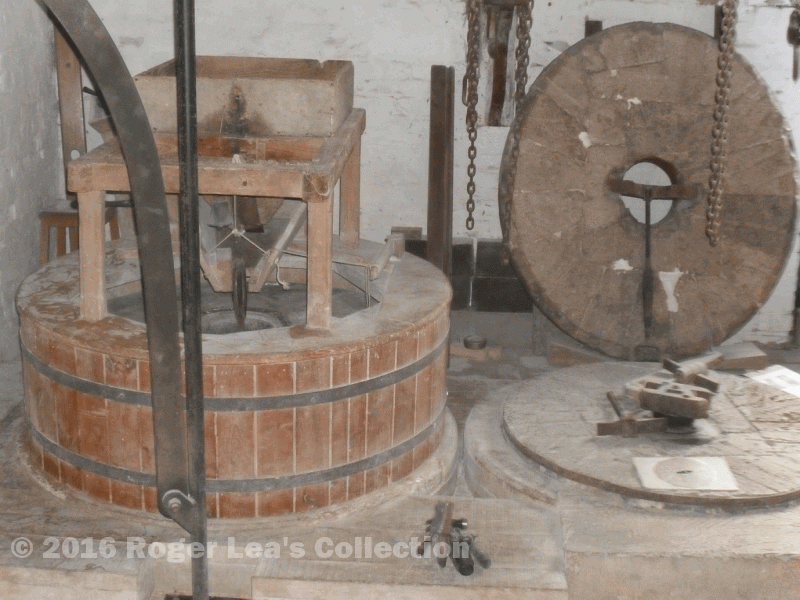Bakers of bread in Sutton Coldfield in the fourteenth century used flour that was a mixture of wheat and rye. A medieval oven recently unearthed in Coleshill Street contained grains of rye, and the corn provided by the Manor for the Head Palesman of Sutton Park in 1433 as payment in kind was also wheat and rye. The Chase rider received oats and hay. All the milling was done at the Manor Mills, a water-mill at the bottom of Mill Street.
Oat Field and Rye Field are mentioned in the Elizabethan Court Rolls for Sutton, which also confirm the open field system, where one field was ploughed in October for winter wheat and rye, another in April for barley and oats, and the third field, left fallow, was ploughed in June. One court order, “all inhabitants of this manor must leave their encroachments on the Waste made immediately after their hemp and flax is ripe” shows that other crops were grown outside the open fields. Hemp and flax were grown for their fibre to make ropes and coarse cloth - most medieval houses had a piece of land called a hemp pleck next to them. Another court order, “that no person having a mill outside this lordship carry any grain or malt out of this lordship to be milled there unless it is his own grain or malt” shows that the Manor Mills still had the monopoly of grinding the corn.
Among the goods of a rich yeoman, Edward Bennett, who died in 1692 were two ricks of wheat and wheat in the barn valued at £95, and no rye, but in 1707 Adrian Cockersole, a yeoman farmer of Sutton, had some of last year’s grain in his barn listed as muncorn, a local name for a blend of wheat and rye. The crops growing in his fields were listed as oats, barley and peas recently sown, and winter corn. In his house he had “flaxen and hempen sheets” as well as better cloth. All the grain was now being milled at various privately owned mills in competition with each other.
There is no mention of root crops in 1707, but in 1762 an anonymous writer calling himself Agricola wrote that “Turnips and barley are the most profitable produce of our lands, which if in good power will also yield a subsequent crop of wheat or peas, and after that one crop (only) of spring corn with seeds.” In 1828 a field in Sutton was rented on condition that one half should have turnips which would be eaten off by sheep, followed by barley, and the other half should be sown with wheat (no mention of rye). In 1828 Sutton’s extensive commons were being brought into cultivation, doubling the amount of farmland here, and soon mills such as New Hall Mill were kept working night and day as demand grew for bread to feed the burgeoning population of the industrial towns.
Potatoes were one of the first crops grown on the newly-enclosed commons to bring the land into good heart, as recommended at the Sutton Enquiry of 1856 - “What was their advice? - the pasture is wretched; we have a fine new scheme for Sutton Coldfield - crop the Park with carrots, turnips and potatoes”.
